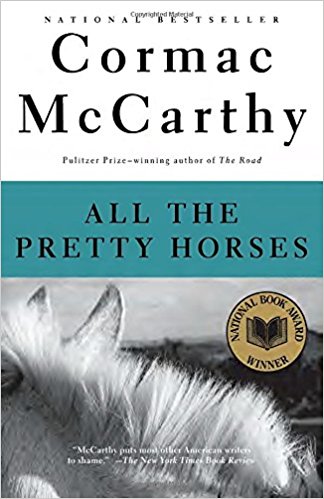Cormac McCarthy is so fine a writer-for my money the best novelist in America today-that he and his work must be accepted pretty much on their own terms. Criticism therefore, in the case of Mr. McCarthy, is reducible largely to questions of taste. He has published now six novels, all of them distinguished for reality of experience and presence of language, for the beauty of their black lyricism shot with comic lightnings, and for consummate artistry. The other five, while marked by considerable differences in subject and material, are nevertheless of a piece both stylistically and philosophically. Blood Meridian (1985), a novel based on the depredations of the John Clanton party-American scalp-hunters paid by the Mexican government to wipe out as many Apaches as they could find and kill-represented McCarthy’s boldest departure to date from the earlier work, a change in direction that was signaled but not summed up by the historical dimension and the switch from a Southern to a Southwestern locale. Now, with All the Pretty Horses, he has made an even more dramatic break. At 58-an age by which most American writers have long since played themselves out-Cormac McCarthy continues to improve as an artist and to write better, and still better, books.
It is possible that Pretty Horses is a less ambitious novel than Blood Meridian; it is not, however, a lesser work. When Cormac McCarthy makes the decision to eschew a thing, he does so in the conscious knowledge that he must do so in order to include something else. Thus Pretty Horses, though less remotely grand a novel than Blood Meridian, is also a more human one. It is the first novel by McCarthy in which human beings are the measure of the universe and not the other way around. For the first time in his career, McCarthy is writing about “folks” rather than about “freaks” (the distinction is Flannery O’Connor’s). The result is not simply the abandonment of the casual nihilism of the earlier books. It is a traditional novel informed by heroic and romantic themes and a humanly affirmative view of all that exists in creation.
While Cormac McCarthy’s work has often been compared to Faulkner’s from which McCarthy himself claims to have learned much, I personally fail to find a resemblance. What was essential to Faulkner was never pretty writing (some times pretty typing) but passion, history, and God. Even in Faulkner’s darkest books there is a human warmth that has been mostly lacking in McCarthy’s work-until now. All the Pretty Horses is the story of three boys in their teens who run away from home in southwest Texas on horseback and cross the Rio Grande into Coahuila Province. The year is 1949. Shortly after their arrival in Mexico they become separated. John Grady Cole, the protagonist and hero, and his partner Lacey Rawlins continue south where they find work breaking horses on a hacienda between Saltillo and Torreón. John Grady falls in love with the patrón’s daughter and complications ensue. John Grady and Rawlins are sent to prison in Saltillo and barely survive the experience. After their release Rawlins returns to Texas, while John Grady tarries to take care of unfinished business before riding north toward the border as winter approaches. The story is simple, straightforward, and gripping, becoming nearly melodramatic toward the end. The themes arc classically western-and Western: youth becomes manhood, courage and resourcefulness prevail and are rewarded. for the first time also in McCarthy’s work, the Faulknerian virtue of endurance points to something beyond itself, and God is more than Absence or Antithesis, He is Postulate. Per haps the greatest surprise in this altogether surprising book is the scene, coming toward the end of the novel, in which John Grady explains to the justice of the peace that he is not as good a man as the judge gives him credit for being. This is more than confession-it is Confession. Cormac McCarthy, a lapsed Catholic, seems in a mood to re call his prelapsarian days.
McCarthy’s greatness lies in his presentation of concrete reality raised through poetry to the plane of symbolic reality with such skill that the two are held simultaneously in existence, neither one diminishing the claim or over-shadowing the presence of the other. In All the Pretty Horses as in the previous hooks, awe of nature inspires passages of magnificent landscape description in which detailed natural observation is embedded like photographic fragments. McCarthy over years has learned to pare his poetry while enhancing the intensity both of language and meaning. Although none of his books is said to have sold more than five thousand hardbound copies, since the publication of Blood Meridian signs have suggested that his work is beginning to be more widely noticed. Professor Vereen M. Bell of Vanderbilt University has written an excellent monograph concerning it (The Achievement of Cormac McCarthy, LSU Press, 1988) and an excerpt from All the Pretty Horses appeared in Esquire last spring. With Blood Meridian McCarthy became the toast of the Southwestern literary community, whom he over whelmed by his eloquent portrayal of their region; “That is a book,” the late Edward Abbey remarked. All the Pretty Horses is the first volume of a projected trilogy, which proceeds apace.
[All the Pretty Horses, by Cormac McCarthy (New York: Alfred A. Knopf) 302 pp., $21.00]



Leave a Reply